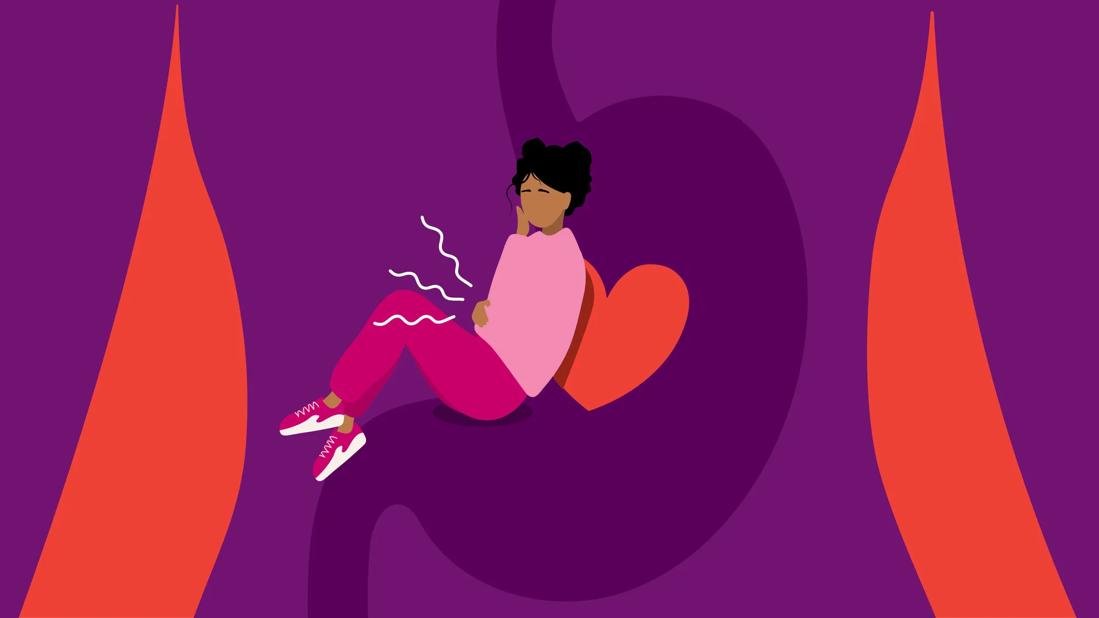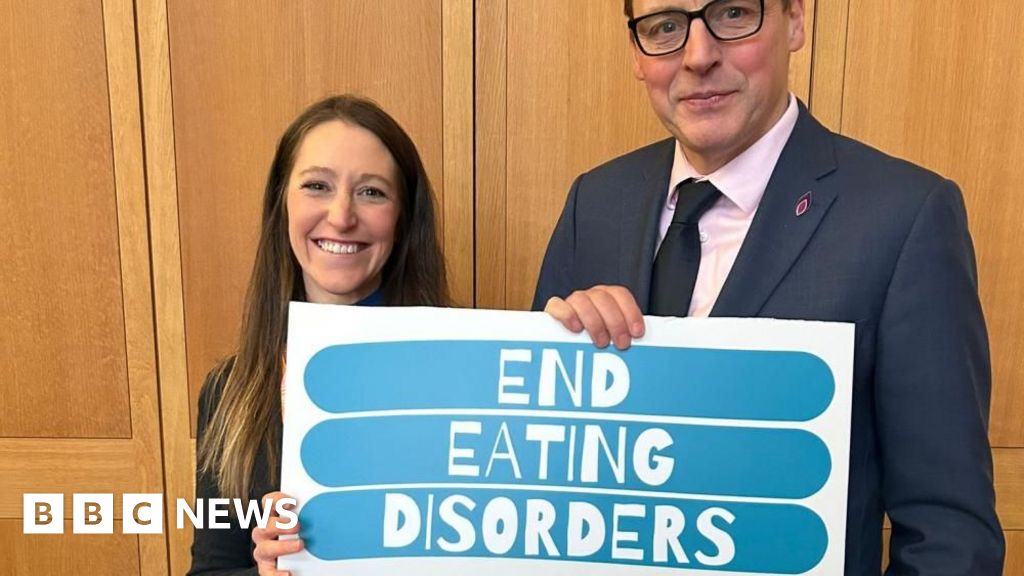Pandemic Led To Increase in Eating Disorders for Teens
:max_bytes(150000):strip_icc()/Parents-GettyImages-1293696418-f88545b6e3884e14b2e993befae4d037.jpg)
It’s been more than four years since our worlds were rocked by the pandemic. It’s been more than four years since we masked up, sheltered in place, and barely saw a friend or loved one who didn’t live under the same roof.
Though COVID-19 is still lingering, thankfully it’s no longer a global emergency, paralyzing our daily lives. Unfortunately, the wreckage the pandemic left behind runs deep. The damage those months of isolation and uncertainty did to our mental health is still fully to be determined—especially among teens.
A new study led by Nadia Roumeliotis, MD, PhD, clinician-researcher at CHU Sainte-Justine and professor in the Department of Pediatrics at Université de Montréal, shows that the public health measures imposed in Canada during the COVID-19 pandemic were directly related to the hospitalization rate for adolescents aged 12 to 17 for eating disorders.
Between April 2016 and March 2023 in Canada, there were 11,289 hospitalizations for eating disorders among 6- to 20-year-olds, including 8,726 (77%) for girls aged 12 to 17. In about 60% of the cases, it was the first hospitalization for an eating disorder.
Previous studies in the United States revealed similar findings, showing increases in adolescents and young adults seeking both inpatient and outpatient care for an eating disorder in the aftermath of COVID-19.
So, why were teens affected and what can parents do?
Changes in Socialization
According to eating disorder expert Kyla Fox, MSW, RSW, the essence of adolescence is about individuating and developing autonomy. During the pandemic, this natural—and necessary—part of development was restricted for adolescents.
“Socialization is central to adolescence,” says Fox. “Being abruptly denied any and all engagement with friends/peers, school, sports, and extracurricular activities resulted in teenagers having no outlets to self-identify, nowhere to release emotion, engage in movement, and make connections.”
Fox adds, “Without the ability to have any control and/or self-identify, food and the body become a viable place to do so, contributing to a surge in eating disorders among teens.”
The Social Media Effect
Samantha DeCaro, PsyD, the Director of Clinical Outreach and Education at The Renfrew Center, believes the pandemic created the “perfect storm” of risk factors. That includes social isolation, anxiety, depression, grief, trauma, disruption of routines, disparities in care—and an increase in social media use.
“Social media contributed to body dissatisfaction and appearance-related distress, such as ‘Zoom dysmorphia,’” says Dr. DeCaro. Weight stigma is also a risk factor in the development of eating disorders. Dr. DeCaro says those biases manifested as fear of the “quarantine 15” during the pandemic.
Excessive social media use was common during the pandemic and has continued after the lockdown.
“Research studies have found consistent links between social media use and body dissatisfaction, low self-esteem, disordered eating, and anxiety,” adds Dr. DeCaro.
Food Insecurity
Dr. DeCaro also points to the increase of food insecurity during the pandemic as a cause. “Inability to access adequate amounts of food, can contribute to the onset of a clinical eating disorder or a pattern of disordered eating for years to come.”
Need to Process Feelings
The truth is, that eating disorders are rarely about food.
Meredith Sjoberg, PhD, a psychologist, school counselor, and eating disorder expert, says during the pandemic, some teens were likely feeling profound grief and confusion without knowing how to label, acknowledge, and process those feelings. Food can be used as a way of soothing anxious feelings.
Tough Transitions
Transitions of all types—from those that are unwanted, like the lockdown, to ones that are desirable, such as going off to college—can contribute to eating disorders. Once COVID-19 restrictions loosened up, that too was a difficult transition.
“The dramatic shift from virtual spaces to in-person interactions may have contributed to a wide range of emotions, and for some the experience may have evoked feelings of fear, anxiety, and insecurity,” says Dr. DeCaro. “Eating disorders are emotional disorders and any distressing emotion can heighten symptom urges.”
Fox agrees that lacking socialization and connection for so long created a tremendous amount of anxiety when teens returned to it.
“Knowing how to engage, relate, communicate, and feel safety and ease with others all became foreign—and still feels so for many,” she says. “Being back with others in real life meant a different level of self-exposure, no longer having the screen to hide behind. More insecurities, anxieties, and fears were present as a result.”
What To Look Out For In A Post-Pandemic World
The disruptions caused by the pandemic have left lasting impacts on adolescents. Fox says that’s made it crucial for parents to be vigilant and proactive. They should:
- Be mindful of the time and content kids are viewing online
- Know who kids are friends with and stay informed about their day-to-day activities
- Encourage and participate in open conversations about life circumstances and feelings
- Actively engage with kids and assist with their schoolwork
- Express love and support not just in words, but through actions
- Show kids that you are there for them in every aspect of their lives
Fox wants parents to understand that eating disorders are deeply rooted mental health issues, not simply about vanity, weight loss, cutting out carbs, or needing ice cream. “They stem from a person’s lack of self, worth, direction, and purpose,” she says.
They are often concurrent with other mental health issues or neurodivergence like depression, anxiety, and ADHD. “These disorders are harmful and powerful ways for someone to exert control or express their lack thereof,” says Fox.
Eating disorder symptoms to be aware of
Dr. DeCaro emphasizes that while it’s important to remember that females are at an elevated risk, eating disorders can affect any gender, age, shape, or size. But symptoms of eating disorders can be easily missed due to the secrecy many suffering use to mask their symptoms. For example, some may appear to eat “normally” in front of others while pushing food around their plate, using the bathroom as an excuse to purge, or hiding food to later eat in solitude.
The signs and symptoms Dr. DeCaro recommends looking out for in your tweens and teens include:
- Increased anxiety around food, ingredients, and restaurants (They may even avoid social events because of food.)
- Preoccupation with weight, shape, or size
- Weighing themself multiple times a day (Even small fluctuations in weight can significantly impact mood.)
- Isolation from family and friends
- Skipping meals or eliminating entire food groups
- Rigid rules around eating or exercise
- Disappearing after meals or using the bathroom immediately after meals
- Not enjoying things they used to enjoy
- Depression, anxiety, or other mood issues
- Always dieting or extensive knowledge about food, ingredients, calories, etc.
- Over-exercising even when injured or very tired, or having significant anxiety when they cannot exercise
If you notice any signs, make sure to call your child’s health care provider for help. “[Eating disorders] are a major cry for help, deeply complex, and cannot be fixed by merely ‘eating more or less’ or ‘gaining or losing weight,'” says Fox. “They require thoughtful support and treatment by highly experienced professionals, not only for the person suffering but also for everyone who loves them.”
link





